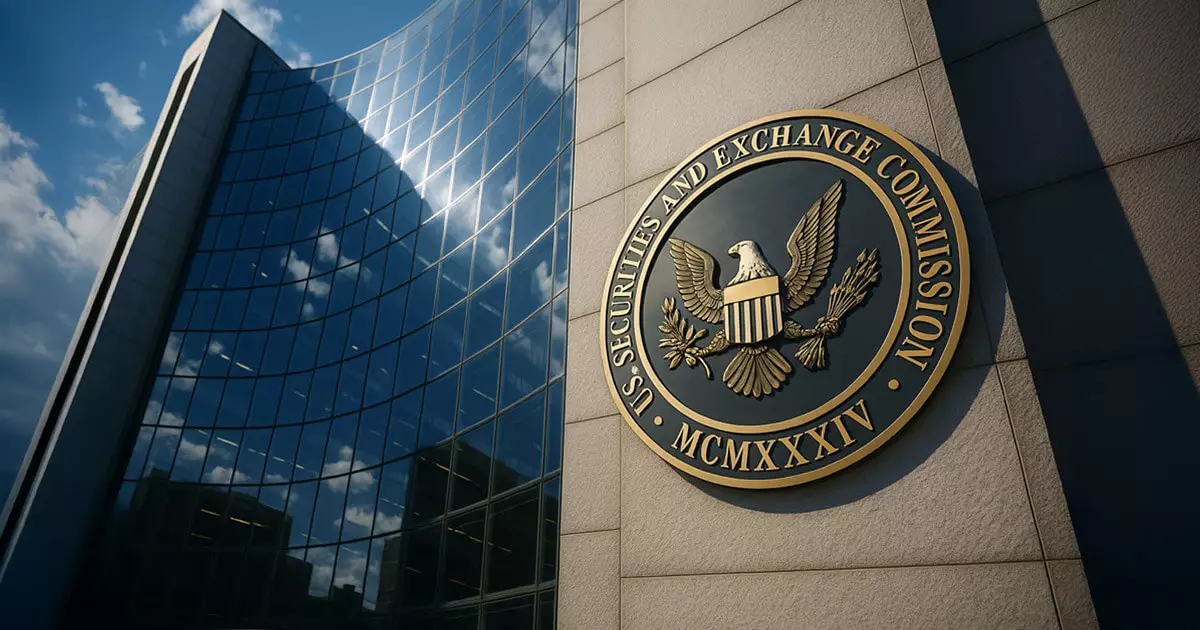The recent guidance issued by the US Securities and Exchange Commission (SEC) marks a pivotal step in the evolution of digital assets in institutional finance. On May 15, the SEC unveiled updated FAQs that promise to enhance the engagement of broker-dealers and transfer agents with cryptocurrencies. According to SEC Commissioner Hester Peirce, though this guidance is merely “incremental, not comprehensive,” it indicates an important shift toward recognizing and addressing the burgeoning nuances of the digital asset landscape.
The SEC’s cautious yet progressive stance presents an opportunity for institutional players to expand their engagement with digital assets. While the commissioner has noted that many responses simply reflect existing regulations, the subtle but crucial acknowledgment of the operational realities faced by financial institutions signifies a clear direction toward more expansive frameworks that recognize the evolving nature of finance in the digital age.
A Step Forward for Financial Institutions
The evolution of Chainlink, a leader in decentralized oracle networks, highlights the SEC’s guidance as a beacon of potential. The recognition of public blockchains for recordkeeping and regulatory compliance – two areas long ripe with institutional hesitation – is indicative of an evolving framework that aligns with the core tenets of financial prudence. This guidance does not merely bless the use of public technology; it roots into the institutional psyche that compliance can harmoniously coexist with innovation.
At the heart of this discussion is the SEC’s recognition of the need for distinct regulatory categorizations tied to different types of digital assets. Broker-dealers are now afforded a clearer pathway regarding custody obligations concerning cryptocurrencies outside the realm of securities. Particularly for major assets like Bitcoin and Ethereum, the guidance delineates boundaries previously clouded by ambiguity, allowing institutions to operate with more clarity and reduced compliance burdens.
The Road Ahead: Challenges and Risks
Nevertheless, as clearance emerges, risks do not diminish. The SEC’s warning around the lack of protections under the Securities Investor Protection Act (SIPA) for non-security cryptocurrencies underscores an essential caveat. Institutions and their clientele could expose themselves to unforeseen risks when engaging with these assets. Despite the promising exposition of opportunities, a prudent approach is necessary; stakeholders must appreciate the nuanced implications of navigating a marketplace where investor protections may not extend fully.
The reason many institutions have hesitated to adopt digital assets boils down to uncertainty and fear of regulatory backlash. The SEC’s incremental updates indeed serve to mitigate some of these fears, but they are not a panacea. A foundation of robust and comprehensive regulations is still a necessity, as investors need assurance and clarity outside of the SEC’s current framing that largely focuses on Bitcoin and Ethereum.
Chainlink’s Role in a New Financial Paradigm
Chainlink’s involvement in aiding the SEC’s understandings of digital assets cannot go unnoticed. By demonstrating how their technology can bolster compliance and facilitate smooth operations between traditional finance (TradFi) and blockchain technologies, Chainlink positions itself as a vital player in bridging these worlds. As the SEC endorses the idea of “unified golden records” and “smart-contract-driven compliance checks,” Chainlink expresses an essential role in devising future-ready solutions aimed at both security and efficiency.
This endorsement not only aligns Chainlink with established institutions but also enhances its credibility as a fintech paradigm shifter. With institutional adoption increasingly becoming a focal point within the $132 trillion fund-administration market, Chainlink’s infrastructure aligns perfectly with a systemic shift towards blockchain-based solutions. Institutions can leverage these insights to transition their operations onto the blockchain while adhering to compliance needs, ultimately realizing substantial cost efficiencies.
The Bigger Picture: Navigating a Transformative Landscape
The SEC’s latest guidance offers a starting point rather than a conclusive plan. As cryptocurrency continues to intermingle with conventional finance, it is paramount for regulations to evolve holistically, protecting investors while fostering innovation. Institutions must proactively navigate this fresh landscape, armed with the knowledge that despite the SEC’s cautious promises, the financial terrain remains filled with both opportunities and vulnerabilities. A mere inch away from acceptance, the future of digital asset integration into financial markets will demand clarity, vigilance, and adaptability as stakeholders strive to balance innovation and regulation in this rapidly transforming environment.















